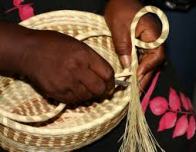Almost half the Africans forced to this country in chains first touched its shores at Sullivan’s Island, South Carolina. A historical marker planted on that quiet spot of coast pays tribute to the courage and resilience of those uprooted generations and their many descendants. It was our first stop on a post-Christmas pilgrimage that Bill and I made to Charleston.
The second was Mother Emmanuel AME, an imposing church on a busy street in the heart of downtown. A gathering of flowers, wreaths, and prayers honoring the nine members murdered there during a Bible study in June 2015 stands next to the church’s marquee. It bears a message of thanks to the community for its many acts of kindness.
In the centuries between the terrors of slavery and last summer’s racial massacre, a transplanted African culture took root on the barrier islands of Georgia and South Carolina. In the mid-1980s, when I was a feature writer with Sojourners magazine, I visited Daufuskie Island to cover and offer support to a remnant Gullah community’s struggle against displacement. Still lingering among the live oaks draped with Spanish moss were the suspenseful trickster tales that had been passed down for generations, the “shouts” and ecstatic prayers that had echoed in praise houses all night long, and the lullabies of resistance sung to sleeping infants while maternal hands crafted baskets for rice from bulrushes and pine needles laced with strips of palmetto in the African way. But the ancient whispers were being drowned out by the constant bellow of bulldozers, destroying everything in sight to make way for golf courses and opulent resort “plantations.” Continue reading
